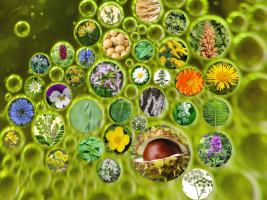当前位置:
X-MOL 学术
›
Adv. Colloid Interface Sci.
›
论文详情
Our official English website, www.x-mol.net, welcomes your feedback! (Note: you will need to create a separate account there.)
Surface activity and foaming properties of saponin-rich plants extracts.
Advances in Colloid and Interface Science ( IF 15.6 ) Pub Date : 2020-03-19 , DOI: 10.1016/j.cis.2020.102145 Ilona Góral 1 , Kamil Wojciechowski 1
Advances in Colloid and Interface Science ( IF 15.6 ) Pub Date : 2020-03-19 , DOI: 10.1016/j.cis.2020.102145 Ilona Góral 1 , Kamil Wojciechowski 1
Affiliation

|
Saponins are amphiphilic glycosidic secondary metabolites produced by numerous plants. So far only few of them have been thoroughly analyzed and even less have found industrial applications as biosurfactants. In this contribution we screen 45 plants from different families, reported to be rich in saponins, for their surface activity and foaming properties. For this purpose, the room-temperature aqueous extracts (macerates) from the alleged saponin-rich plant organs were prepared and spray-dried under the same conditions, in presence of sodium benzoate and potassium sorbate as preservatives and drying aids. For 15 selected plants, the extraction was also performed using hot water (decoction for 15 min) but high temperature in most cases deteriorated surface activity of the extracts. To our knowledge, for most of the extracts this is the first quantitative report on their surface activity. Among the tested plants, only 3 showed the ability to reduce surface tension of their solutions by more than 20 mN/m at 1% dry extract mass content. The adsorption layers forming spontaneously on the surface of these extracts showed a broad range of surface dilational rheology responses - from null to very high, with surface dilational elasticity modulus, E' in excess of 100 mN/m for 5 plants. In all cases the surface dilational response was dominated by the elastic contribution, typical for saponins and other biosurfactants. Almost all extracts showed the ability to froth, but only 32 could sustain the foam for more than 1 min (for 11 extracts the foams were stable during at least 10 min). In general, the ability to lower surface tension and to produce adsorbed layers with high surface elasticity did not correlate well with the ability to form and sustain the foam. Based on the overall characteristics, Saponaria officinalis L. (soapwort), Avena sativa L. (oat), Aesculus hippocastanum L. (horse chestnut), Chenopodium quinoa Willd. (quinoa), Vaccaria hispanica (Mill.) Rauschert (cowherb) and Glycine max (L.) Merr. (soybean) are proposed as the best potential sources of saponins for surfactant applications in natural cosmetic and household products.
中文翻译:

富含皂苷的植物提取物的表面活性和起泡性能。
皂苷是由许多植物产生的两亲性糖苷次级代谢产物。到目前为止,只有极少数的产品经过了彻底的分析,发现作为生物表面活性剂的工业应用则更少。在这项贡献中,我们筛选了据报道富含皂苷的不同科的45种植物的表面活性和起泡特性。为此,在苯甲酸钠和山梨酸钾作为防腐剂和干燥助剂的存在下,从所谓的富含皂素的植物器官中制备室温室温提取液(浸渍液),并在相同条件下喷雾干燥。对于15种选定的植物,也可以使用热水(水煎15分钟)进行提取,但是在大多数情况下,高温会降低提取物的表面活性。据我们所知,对于大多数提取物,这是有关其表面活性的第一个定量报告。在测试的植物中,只有3个植物在1%的干提取物质量含量下能够将其溶液的表面张力降低20 mN / m以上。在这些提取物表面上自发形成的吸附层显示出广泛的表面膨胀流变学响应-从零到非常高,五种植物的表面膨胀弹性模量E'超过100 mN / m。在所有情况下,表面膨胀反应都由皂角苷和其他生物表面活性剂的典型弹性贡献决定。几乎所有提取物都具有起泡沫的能力,但是只有32种提取物能够使泡沫维持1分钟以上(对于11种提取物,泡沫至少在10分钟内保持稳定)。一般来说,降低表面张力和产生具有高表面弹性的吸附层的能力与形成和维持泡沫的能力没有很好的关联。根据总体特征,包括皂角皂甙(Saponaria officinalis L。)(肥皂皂),燕麦燕麦(Avena sativa L。)(燕麦),欧洲七叶树(Eesculus hippocastanum L。)(马栗),藜麦藜(Chenopodium quinoa Willd)。(藜麦),西洋参(Vaccaria hispanica)(密西根州)Rauschert(牛w)和Glycine max(L.)(大豆)被建议作为天然化妆品和家用产品中表面活性剂应用的最佳皂苷来源。西班牙西洋参(Vaccaria hispanica)(Mill。)Rauschert(cowherb)和Glycine max(L.)Merr。(大豆)被建议作为天然化妆品和家用产品中表面活性剂应用的最佳皂苷来源。西班牙西洋参(Vaccaria hispanica)(Mill。)Rauschert(cowherb)和Glycine max(L.)Merr。(大豆)被建议作为天然化妆品和家用产品中表面活性剂应用的最佳皂苷来源。
更新日期:2020-03-19
中文翻译:

富含皂苷的植物提取物的表面活性和起泡性能。
皂苷是由许多植物产生的两亲性糖苷次级代谢产物。到目前为止,只有极少数的产品经过了彻底的分析,发现作为生物表面活性剂的工业应用则更少。在这项贡献中,我们筛选了据报道富含皂苷的不同科的45种植物的表面活性和起泡特性。为此,在苯甲酸钠和山梨酸钾作为防腐剂和干燥助剂的存在下,从所谓的富含皂素的植物器官中制备室温室温提取液(浸渍液),并在相同条件下喷雾干燥。对于15种选定的植物,也可以使用热水(水煎15分钟)进行提取,但是在大多数情况下,高温会降低提取物的表面活性。据我们所知,对于大多数提取物,这是有关其表面活性的第一个定量报告。在测试的植物中,只有3个植物在1%的干提取物质量含量下能够将其溶液的表面张力降低20 mN / m以上。在这些提取物表面上自发形成的吸附层显示出广泛的表面膨胀流变学响应-从零到非常高,五种植物的表面膨胀弹性模量E'超过100 mN / m。在所有情况下,表面膨胀反应都由皂角苷和其他生物表面活性剂的典型弹性贡献决定。几乎所有提取物都具有起泡沫的能力,但是只有32种提取物能够使泡沫维持1分钟以上(对于11种提取物,泡沫至少在10分钟内保持稳定)。一般来说,降低表面张力和产生具有高表面弹性的吸附层的能力与形成和维持泡沫的能力没有很好的关联。根据总体特征,包括皂角皂甙(Saponaria officinalis L。)(肥皂皂),燕麦燕麦(Avena sativa L。)(燕麦),欧洲七叶树(Eesculus hippocastanum L。)(马栗),藜麦藜(Chenopodium quinoa Willd)。(藜麦),西洋参(Vaccaria hispanica)(密西根州)Rauschert(牛w)和Glycine max(L.)(大豆)被建议作为天然化妆品和家用产品中表面活性剂应用的最佳皂苷来源。西班牙西洋参(Vaccaria hispanica)(Mill。)Rauschert(cowherb)和Glycine max(L.)Merr。(大豆)被建议作为天然化妆品和家用产品中表面活性剂应用的最佳皂苷来源。西班牙西洋参(Vaccaria hispanica)(Mill。)Rauschert(cowherb)和Glycine max(L.)Merr。(大豆)被建议作为天然化妆品和家用产品中表面活性剂应用的最佳皂苷来源。

























 京公网安备 11010802027423号
京公网安备 11010802027423号